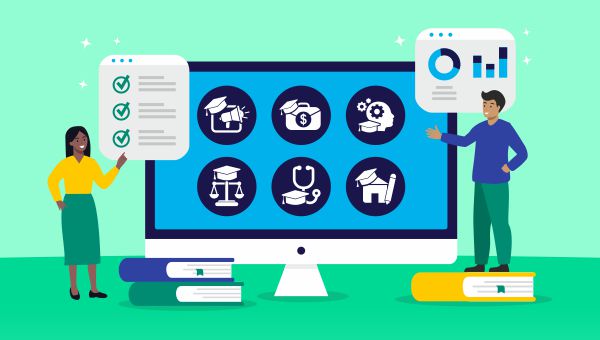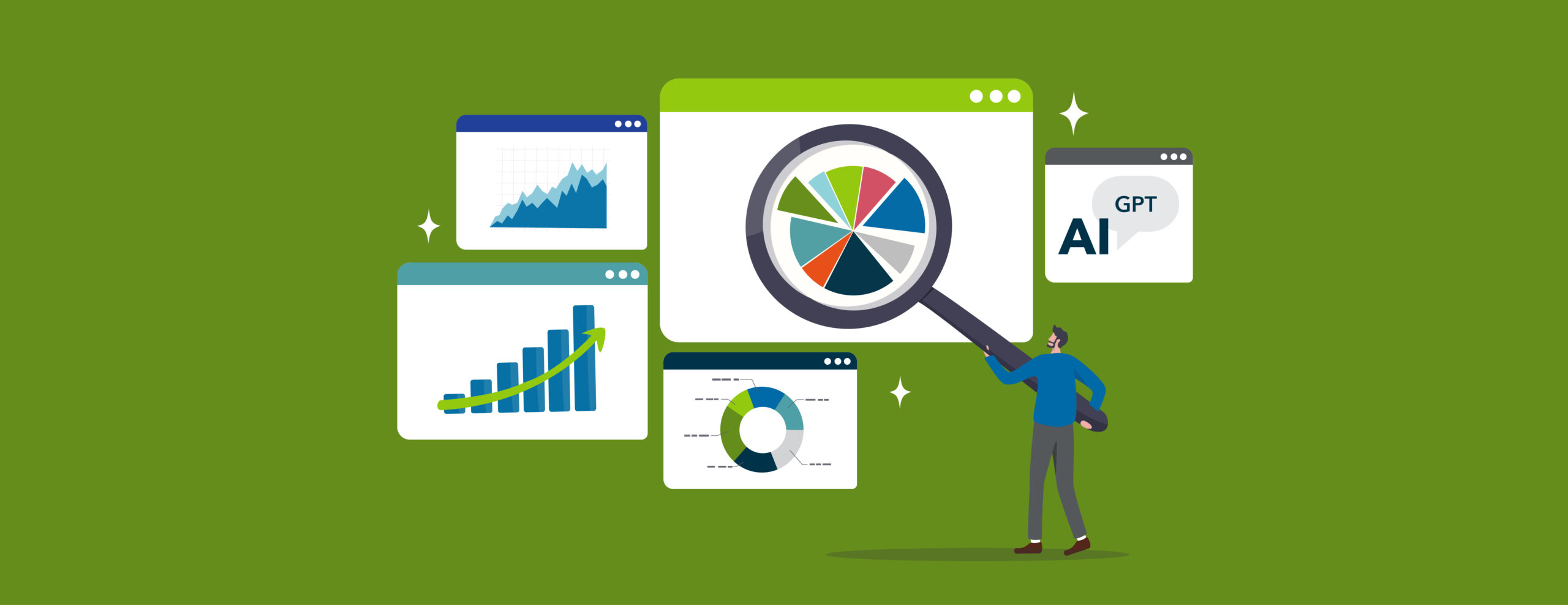Why Universities Need the Right Partnership Criteria
When a higher education institution outsources its enrollment, marketing, or student engagement efforts, the stakes are high. Missteps don’t just cost money — they cost time and, most critically, can hinder enrollment growth. Many universities make the mistake of selecting vendors that focus on chasing leads, rather than aligning with the school’s mission or long-term goals.
Without clear partnership criteria, even well-intentioned collaborations can falter. Misaligned university partnerships often lead to disjointed campaigns and wasted resources. What begins as a lead generation effort can evolve into dependency on a vendor that operates in isolation, without being guided by the institution’s strategy.
The right partner, by contrast, integrates seamlessly with the institution’s mission, aligns its services with the institution’s desired outcomes, and acts as a true extension of the institution.
The Risks of Choosing the Wrong Partner
The wrong partner can create more problems than it solves. Some vendors sell services focused solely on activities — ads placed, events hosted, emails sent — without tying its efforts to the institution’s overarching strategy. This approach often fails to generate real enrollment growth, causing internal teams to struggle with unqualified leads and retention challenges.
Another potential risk stems from failing to consider how a partner will mesh with the institution’s legacy systems. Universities invest heavily in their marketing resources, such as their customer relationship management (CRM) platforms and brand assets. A vendor that imposes its own tools without considering the university’s existing infrastructure can create costly redundancies.
Equally concerning are long-term, restrictive partnership contracts that lock an institution into dependency and limit its flexibility, leaving it at the mercy of a vendor whose priorities may clash with the institution’s broader objectives or evolving market conditions.
Strategic Alignment as the Core Test
The foundation of any successful university partnership is strategic alignment. True partners base the services they offer on the institution’s unique goals. They view marketing, admissions, and student success teams as interconnected — not completely separate entities.
Shared key performance indicators (KPIs) are a key component of this alignment. When both the institution and its partner commit to tracking metrics such as the conversion rate from inquiry to application, the yield rate from admission to enrollment, and the one-year retention rate, they create mutual accountability across every stage of the student journey.
Archer’s Growth Readiness Assessment offers a model for this type of collaboration. This tool helps an institution evaluate its readiness to scale its programs — whether they are in person or online — by evaluating the university’s internal capacity, identifying any potential hurdles, and aligning its in-house teams and external partners. Performing such an assessment early in the vendor selection process ensures the university partnership is built on a foundation of clarity and trust.
Procurement Criteria That Drive Success
When it comes time for an institution to formalize a partnership, focusing on transparency, flexibility, and accountability can make the difference between achieving sustainable growth and creating new operational challenges.
Institutions that emphasize these criteria are better positioned to form partnerships that deliver measurable results and long-term value.
- Transparency in reporting and asset ownership is vital. An institution should establish whether it will retain full ownership of the assets created and determine how often performance reports will be shared. A transparent partner will make reporting accessible and collaborative, not proprietary.
- Flexible contracts are another hallmark of a strong university partnership. The institution should have the freedom to pivot when markets shift or as its internal capacity grows. It should avoid rigid, long-term agreements that limit its control or create dependency.
- Accountability across the student journey should be among the institution’s demands. The most effective partners understand that success extends beyond generating leads and inquiries. Contracts should define what accountability looks like from marketing through enrollment and retention, with clearly articulated performance standards for each stage.
Integrating With Legacy Systems
Integration is a crucial element of successful university partnerships. A capable partner doesn’t replace or disrupt the institution’s existing systems — it strengthens them.
When integration is done well, the partner respects the university’s existing data, assets, and workflows, leading to a more unified, seamless experience for both staff and students. When integration is done poorly, the results can be costly, creating redundancies, inefficiencies, and siloed teams.
Archer’s Onward student engagement platform demonstrates how thoughtful integration can amplify an institution’s capacity without disrupting its operations. Onward uses behavior-based triggers and personalized multichannel engagement efforts to guide students from inquiry through enrollment — working alongside admissions services and complementing the institution’s existing systems rather than supplanting them.
By respecting the institution’s infrastructure, this kind of partnership model helps the university scale its engagement strategies without losing its operational continuity.
10 Questions to Ask Before Choosing a Partner
Selecting the right partner for an institution requires more than comparing price points or promises of lead volume. The most beneficial partnerships are built on mutual accountability, transparency, and shared metrics for success. The right partner should have staff with extensive institutional knowledge and higher ed industry experience, enabling it to provide universities and colleges with the best tools to improve their operations and achieve growth.
Asking the right questions early helps ensure alignment and prevent costly missteps. Institutions can consider asking the following 10 questions when vetting potential partners:
- How do you handle internal and external communications? Institutions need to know who their main points of contact will be, and how knowledge and strategies will be shared across teams.
- What metrics do you use to measure success across the student journey? The ideal vendor should be able to provide full-funnel visibility and focus on metrics that truly drive enrollment growth.
- How frequently will our teams review results together? Successful partnerships depend on transparency and regular communication.
- What have you learned from working with other institutions, and how will that inform our partnership? Vendors should always be willing to adjust their services based on past wins and challenges. They should also have the right resources to serve all of their clients with equal urgency.
- How will you collaborate with us to set enrollment goals and forecast program growth? Credible vendors rely on historical data to inform their projections, and take the time to carefully explore existing growth drivers.
- How do you differentiate marketing strategies at the institutional level from those at the program level? Institutions can benefit from asking for examples that illustrate this distinction.
- What can we expect from this partnership in the first 90 days? Vendors should be able to communicate clear timelines for processes, such as onboarding steps, reporting cadence, and performance metrics.
- Will our institution own all assets, data, and creative from day one? Institutions should have ownership of any assets created and have a clear understanding of how they will be shared and managed.
- Are there any additional fees we should be aware of? Items such as creative assets will need to be refreshed over time, so institutions need to understand what associated costs may arise.
- What questions do you have for us? An ideal partner wants to understand the institution’s unique needs, strengths, and challenges. Using historical data, it can shape a data-driven strategy for the institution, including realistic marketing budgets and lead goals.
These questions establish a framework for transparency, accountability, and scalability — ensuring the partnership begins from a place of trust and aligned goals.
Key Takeaways
- Effective university partnerships start with asking the right questions.
- When your institution prioritizes alignment, accountability, and integration, you can avoid critical missteps.
- The right partner will strengthen — not replace — your institutional vision and help equip you to scale sustainably.
Build University Partnerships That Advance Your Goals
At Archer Education, we work with accredited universities to build strategic partnerships rooted in a shared vision that drive scalable enrollment growth. With decades of higher ed experience, our team of industry experts has developed a flexible partnership model that supports internal growth, so that institutions can build self-sufficiency over time.
Contact our team to learn how our tech-enabled marketing, enrollment, and retention services can support your institution’s long-term goals.







![Protecting Every Marketing Dollar: How Collegis Helped Block $2.2M in Ad Waste with CHEQ [CASE STUDY]](https://blog.college-counseling.com/wp-content/uploads/2025/10/Protecting-Every-Marketing-Dollar-How-Collegis-Helped-Block-22M-in.png)





